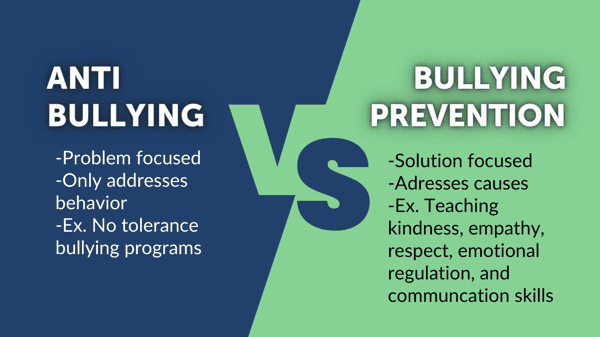Bullying remains a pervasive issue in schools worldwide, affecting students’ mental health, academic performance, and overall well-being. Research indicates that bullying not only impacts victims but also has long-term consequences for bullies and bystanders. To create safe and inclusive learning environments, schools must implement proactive bullying prevention measures. This article explores effective strategies to combat bullying, emphasizing the importance of awareness, education, and community involvement.
Understanding Bullying: Forms and Impact

Bullying can take many forms, each with distinct characteristics and consequences:
- Physical Bullying: Involves physical harm or intimidation, such as hitting, kicking, or damaging property.
- Verbal Bullying: Includes insults, threats, or name-calling aimed at humiliating or demeaning a target.
- Social Bullying: Often covert, it involves exclusion, spreading rumors, or manipulating relationships to isolate an individual.
- Cyberbullying: Occurs online through social media, messaging platforms, or gaming networks, making it pervasive and difficult to escape.
Impact on Students:
- Victims of bullying often experience anxiety, depression, low self-esteem, and academic difficulties.
- Bullies may develop aggressive behaviors, poor interpersonal skills, and a higher likelihood of criminal activity in adulthood.
- Bystanders who witness bullying may feel powerless or guilty, affecting their emotional well-being.
Proactive Measures for Bullying Prevention
To effectively address bullying, schools must adopt comprehensive, proactive measures that foster a positive and inclusive culture:
1. Establish Clear Policies
- Develop and enforce anti-bullying policies that define bullying, outline consequences, and provide reporting mechanisms.
- Ensure policies comply with local and national laws, emphasizing a zero-tolerance approach.
2. Promote Awareness and Education
- For Students:
- Conduct age-appropriate workshops on recognizing and addressing bullying.
- Teach empathy, respect, and conflict resolution skills through role-playing and storytelling.
- For Teachers and Staff:
- Train educators to identify signs of bullying, intervene effectively, and support victims.
- Include professional development sessions on managing classroom dynamics and fostering inclusivity.
- For Parents:
- Organize informational sessions to help parents recognize signs of bullying and communicate effectively with their children.
3. Encourage Open Communication
- Create safe spaces where students feel comfortable discussing their experiences.
- Use anonymous reporting systems, such as suggestion boxes or digital platforms, to encourage students to report bullying without fear of retaliation.
4. Foster a Positive School Climate
- Celebrate diversity through events, clubs, and initiatives that promote inclusion and respect.
- Implement school-wide programs that encourage kindness, collaboration, and teamwork, such as peer mentoring or buddy systems.
5. Incorporate Social-Emotional Learning (SEL)
- Integrate SEL into the curriculum to help students develop self-awareness, emotional regulation, and interpersonal skills.
- Use activities like mindfulness exercises and group discussions to build a supportive classroom environment.
Intervention Strategies
Despite preventive efforts, bullying incidents may still occur. Schools should have clear intervention strategies to address them promptly:
1. Immediate Response
- Intervene in bullying incidents calmly and assertively, separating those involved and ensuring safety.
- Document the incident and gather information from all parties, including bystanders.
2. Support for Victims
- Offer counseling services to help victims rebuild confidence and address emotional scars.
- Involve parents or guardians in creating a support plan tailored to the victim’s needs.
3. Accountability for Bullies
- Address the behavior of bullies through restorative justice approaches, focusing on accountability and repairing harm.
- Provide counseling or behavior modification programs to address underlying issues contributing to bullying behavior.
4. Empowering Bystanders
- Teach students to be “upstanders” by safely intervening, supporting victims, or reporting incidents.
- Recognize and reward positive bystander behavior to reinforce a culture of accountability.
The Role of Technology in Bullying Prevention
With the rise of cyberbullying, technology plays a crucial role in prevention:
- Monitoring and Reporting Tools:
- Use apps and platforms that allow students to report bullying incidents anonymously.
- Digital Literacy Programs:
- Educate students about responsible online behavior, privacy settings, and the consequences of cyberbullying.
- Parental Controls:
- Encourage parents to use monitoring tools and establish guidelines for online activity.
Measuring the Effectiveness of Anti-Bullying Programs
To ensure the success of bullying prevention initiatives, schools should regularly evaluate their impact:
- Surveys and Feedback:
- Conduct anonymous surveys with students, parents, and staff to assess the prevalence of bullying and the effectiveness of interventions.
- Data Analysis:
- Track bullying incidents and resolution outcomes to identify trends and areas for improvement.
- Adjustments:
- Adapt programs based on feedback and emerging challenges to remain responsive to student needs.
Community Involvement in Bullying Prevention
A collaborative approach is essential for lasting change:
- Partnerships with Organizations:
- Work with local nonprofits, mental health professionals, and law enforcement to provide resources and expertise.
- Community Events:
- Host anti-bullying campaigns, awareness walks, or workshops to engage the wider community.
- Parental Engagement:
- Encourage parents to reinforce anti-bullying values at home and participate in school initiatives.
Conclusion: Building a Culture of Respect
Bullying prevention requires a collective effort to create environments where every student feels safe, respected, and valued. By implementing proactive measures, fostering open communication, and promoting empathy and inclusivity, schools can make significant strides in reducing bullying and its harmful effects. Through education, collaboration, and commitment, we can build a culture of respect and kindness that empowers students to thrive academically, socially, and emotionally.